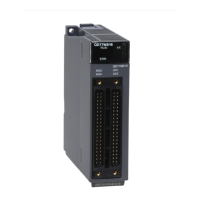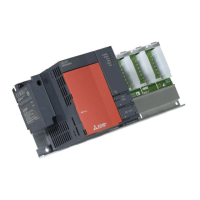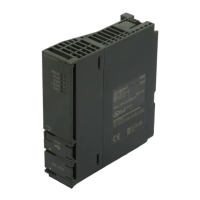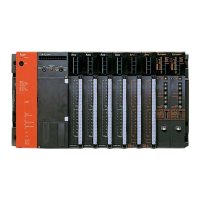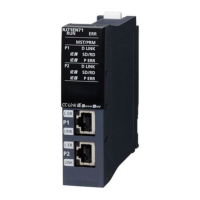7 APPLICATION INSTRUCTIONS
7.19 Other Instructions
773
7
Reading module model name
TYPERD(P)
• This instruction reads the module information stored in the area starting from the I/O number specified by "n", and stores it
in the area starting from the device specified by (D).
• For the Universal model QCPU, the following six modules (only Q series) are supported.
• For the LCPU, the following four models are supported.
• The value of n is specified by the first 3 digits of the hexadecimal 4 digits that represent the start I/O number of a module
whose model name is to be read.
• Universal model QCPU: The serial number (first five digits) is "11043" or later.
Setting
data
Internal device R, ZR J\ U\G Zn Constant
K, H
Others
Bit Word Bit Word
n
(D)
Setting
data
Description Setting range Set by Data type
n Value obtained by dividing the start I/O number of a module whose
model name is to be read by 16
0 to FFH, 3E0 to 3E3H
(Universal model QCPU)
User BIN 16 bits
0 to FFH, 3E0(LCPU)
(D) (D)+0 Execution result of the instruction Within each device range System BIN 16 bits
(D)+1 to (D)+9 Module model name Character string
• CPU module
• Input module
• Output module
• I/O combined module
• Intelligent function module
• GOT (bus connection)
• CPU module
• Input module
• Output module
• Intelligent function module
When the target module occupies one slot
Universal model QCPU
Basic
High
performance
Process
Redundant
Universal
LCPU
Ver.
TYPERD
TYPERDP
Command
Command
TYPERD D
n
TYPERDP
D
n
Power
supply
module
CPU
module
QX10 QX10 QX10 QX10
Q68
ADV
QY41
P
QY10 QY10
3E00
H 0000H 0010H 0020H 0030H 0040H 0050H 0070H 0080H Start I/O number configured in
the I/O assignment setting
Specify H3E0 as the start I/O number of the CPU slot.
Specify K3 or H3 as the start I/O number to be read.

